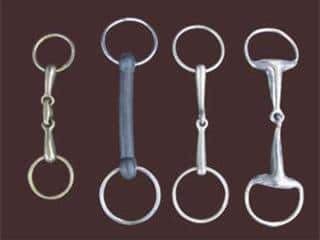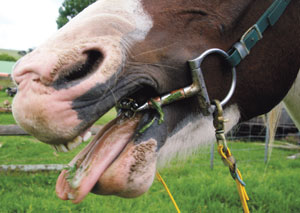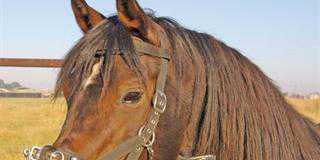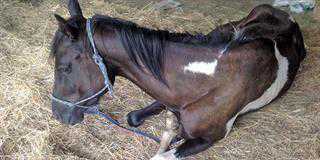
The snaffle is a bit which is attached to a pair of reins and ridden two-handed, as it has no ‘shanks’ and thus doesn’t remain stable in the mouth when ridden one-handed. For this reason, shanked bits, which could be used by a cavalryman who steered with one hand and brandished a lance or sword with the other, came into vogue in later times. But snaffle bits have survived over the centuries because they generally suit all types of riders and are comfortable for novice horses.
How it works
A snaffle presses directly down on the tongue, the bars of the mouth and against the lips at the corners of the horse’s mouth. The pressure exerted on the mouth corresponds directly to the pressure exerted by the hands of the rider.
It’s regarded as ‘softer’ than a curb bit, because the latter has a leverage effect and multiplies the pressure exerted by the rider.
In other words, riders with ‘hard hands’ can do far less damage to a horse’s mouth with a snaffle than a curb bit. Generally, all snaffle bits will lift the horse’s head when applied correctly, while a bit also applies pressure to the poll, causing the horse to drop its chin and bring its head down towards a vertical position.
Types of snaffle
Snaffles can be straight, slightly curved (Mullen mouth) or have one or more joints in the middle. The jointed bits can be used by a good rider to bring the horse’s head down and inwards. Straight bar snaffles are often used on young horses or for leading breeding stallions, as they’re relatively ‘mild’ and exert pressure mainly on the tongue.

If it eats with a bit in its mouth, the horse associates it with a pleasant experience. Photo: FW Archive
Even milder are the Mullen mouth snaffles, as the curved shape means they act only on the bars (the space between the incisors and cheek teeth) and they’re often made of rubber to make them softer still. Mullen mouth rubber bits are used for breaking in horses or during lunging. They are, however, more suitable for warmbloods, the British pony breeds and Thoroughbreds, such as Arabians, which often have tiny muzzles and need narrower bits to be able to close their mouths.
If the mouth is too small and fine, a thick rubber bit can chafe the corners.
The width of the snaffle varies from about 1cm to 2cm and jointed snaffles taper in the centre. Wire or twisted snaffles are regarded as cruel and not permitted in the show ring. They’re sometimes used in training horses, but can cause severe damage to the horse’s bars, tongue and lips if used by an inexperienced rider. The three types of rings commonly used are the ‘loose ring’, the ‘D’ and ‘egg-butt’. The egg-butt is designed to protect sensitive lips, the D ring keeps the bit steady in the mouth, while the loose ring is preferred for racing or show riders.
Disadvantages
A snaffle bit can be pulled through the mouth unless stabilised by a noseband in the case of an English bridle or a leather curb strap in Western bridles, where a noseband isn’t used. A bit is a better option for the following:
- For a horse over six years of age used for advanced riding.
- Where collection is important.
- For disciplines such as tent-pegging or roping, where one-handed riding is required.
Contact Dr Mac at [email protected]. Please state ‘Horse talk’ in the subject line of your email.













